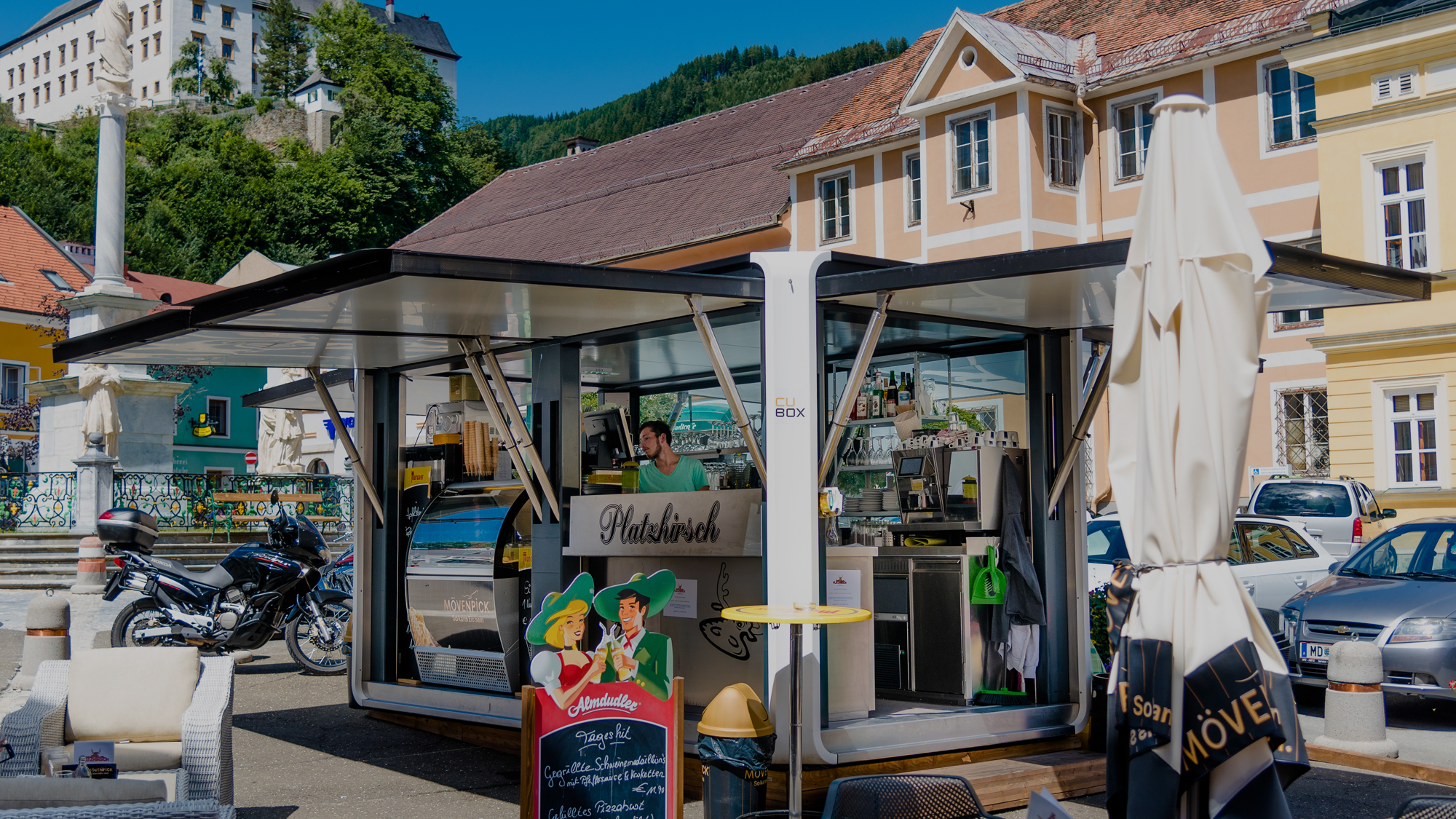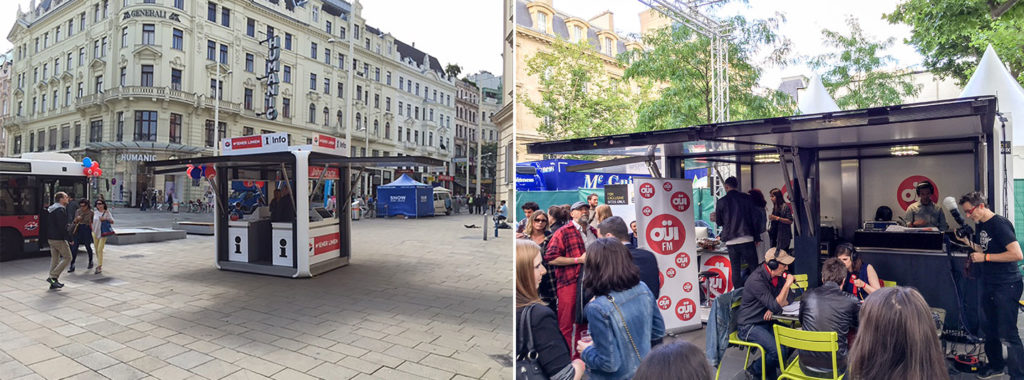
How Urban Kiosks Can Be Attractive, Green Additions to the City
April 20, 2017 — Blog
Architecture and buildings, whether private homes, office towers or public structures have always interested me. Having traveled extensively throughout my life, I have seen all kinds of buildings. It surprised me that there was rarely any consistent style for small structures such as kiosks, outdoor bars, food stalls, newsstands or vending booths. Almost all looked different, many were not attractive and few were sustainable or environmentally friendly. Some were even operated with diesel generators, creating unpleasant noises and fumes.
When I saw such an example – a diesel powered mobile ticket office – in front of a historic tourist attraction in Madrid, Spain, I said to myself: “Now I know what I am going to do in the future! I am going to build an autonomous kiosk, powered with solar energy.”
At that time, I was co-owner and Managing Director of a mid-sized company in Austria, supplying components to the pulp and paper industry. For a long time, however, I had been interested in energy issues and believed that all energy on earth should come from renewable energy sources, such as waterways, wind or sun.

I started a new company and sat together with a design studio to work out an attractive solution for my idea. We wanted the result to be extraordinary, not just from a technical and environmental perspective, but also visually.
Kiosks serve a number of purposes: they offer services and goods on a local scale, they revive neighborhoods by creating places to hang out, they offer employment where there are limited other opportunities. Often, however, they are difficult to install and to dismantle, which can be an obstacle in cities with pronounced seasonal differences between winter and summer activities. Energy supply is not always easy to secure and safety may be an issue, in particular with temporary structures.
CUBOX seeks to address these challenges, offering a sleek, modern, timeless design that is part of its identity. The kiosks are robust, sturdy and secure. Meanwhile, they integrate the most advanced technology in solar energy generation and storage ensures reliability and independence. Solar infrastructures of this kind can even contribute to the resilience and emergency-response capacity of cities.
As many cities face huge problems with air quality and other climate change related issues, replacing traditional kiosks with more sustainable, environmentally-friendly versions is one step in creating healthier cities. In cities suffering from regular power outages or brownouts, these off-the-grid, independent power generators could continue to serve people’s everyday needs, keeping the city moving.
A contemporary approach to kiosks necessarily should strive to enhance its surroundings, be easy to setup and operate and to be versatile, serving a variety of purposes. Today, they may also harness solar energy generated through photovoltaic panels, be 100% eco-friendly, store excess energy in batteries and create no noise and or exhaust, blending into the urban environment.

Considering many major cities have hundreds of kiosks, replacing existing structures with a self-sufficient system could create vast amounts of renewable energy and cut greenhouse gases. Even a small kiosk, for example, can generate enough energy to power an average household of 3-4 people.
At the same time, a new concept could have the capacity to fit both into historic towns as well as into contemporary settings, either offering a clear contrast or blending into the surrounding modern architecture. A longstanding feature of our towns and cities, a new generation of kiosks may now serve a refreshed role within our urban communities.